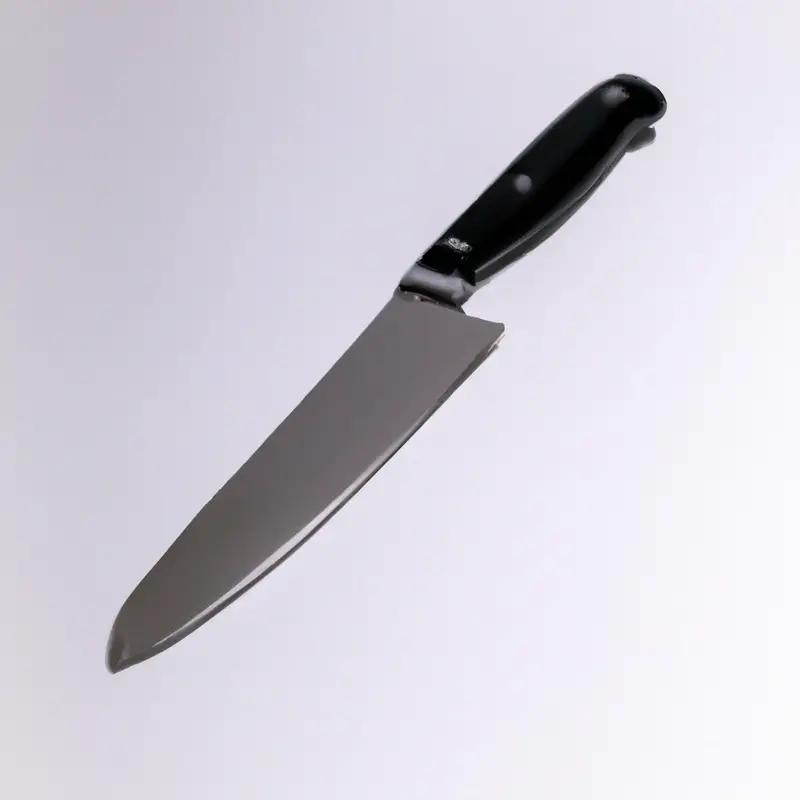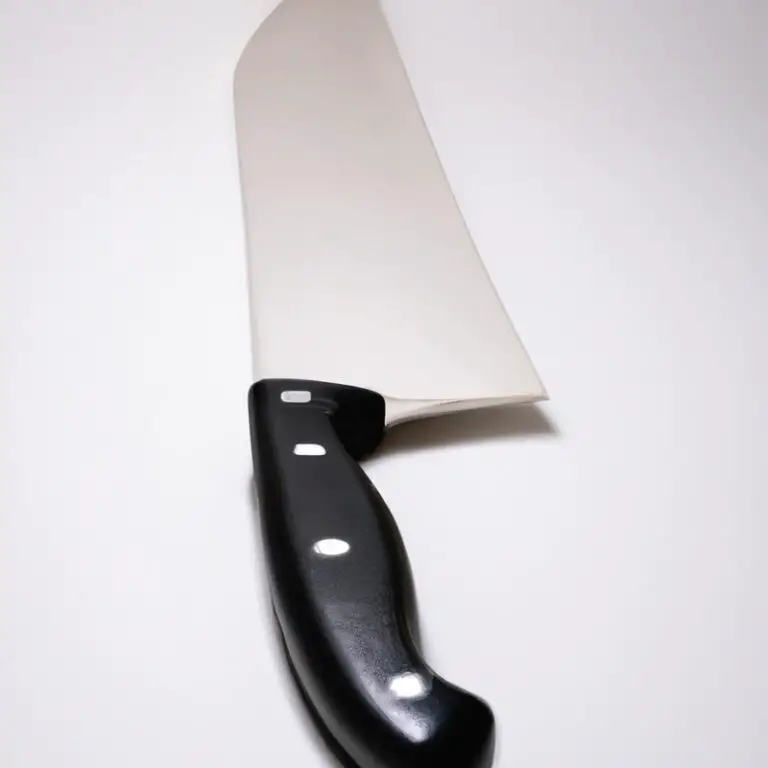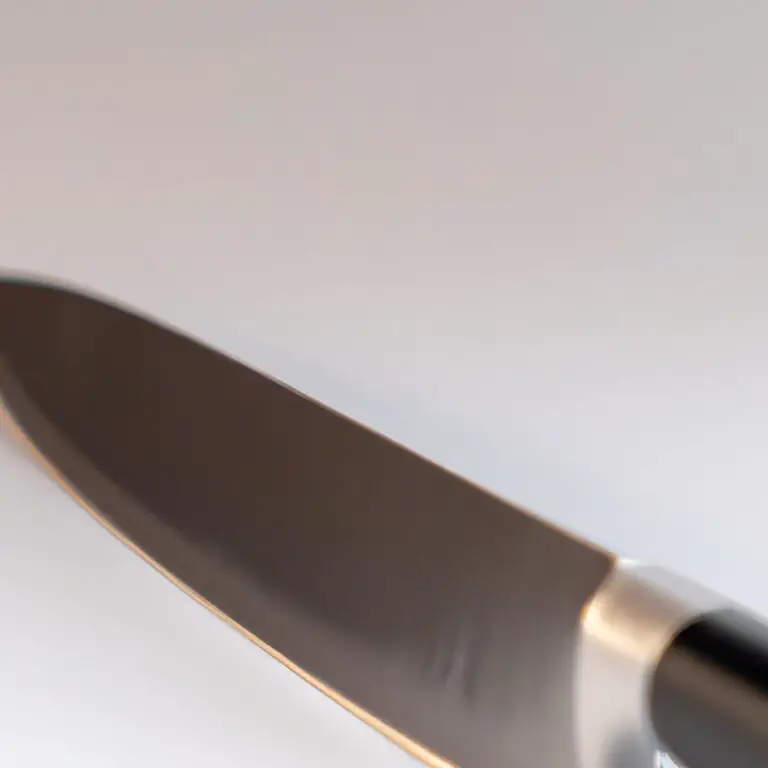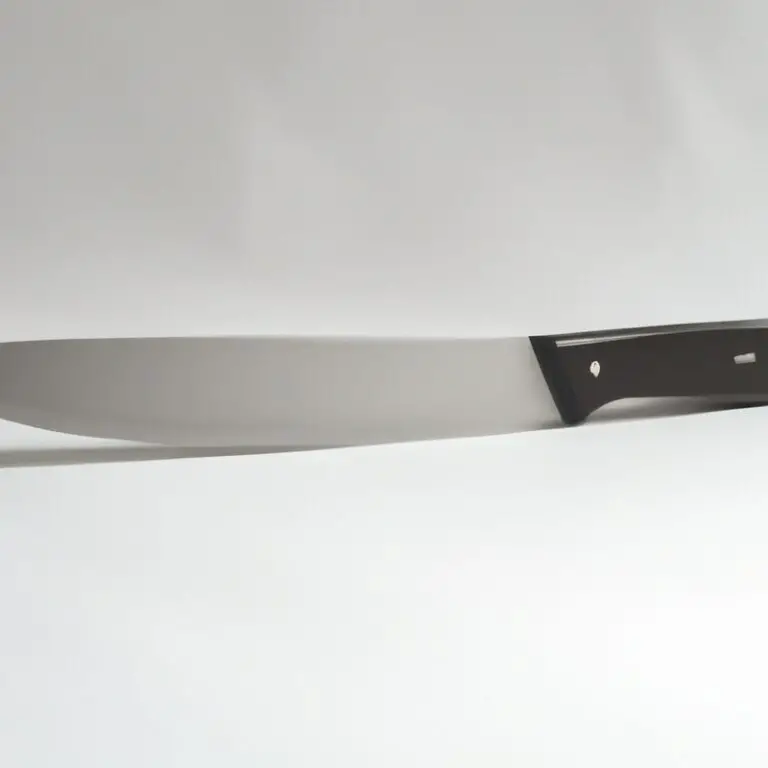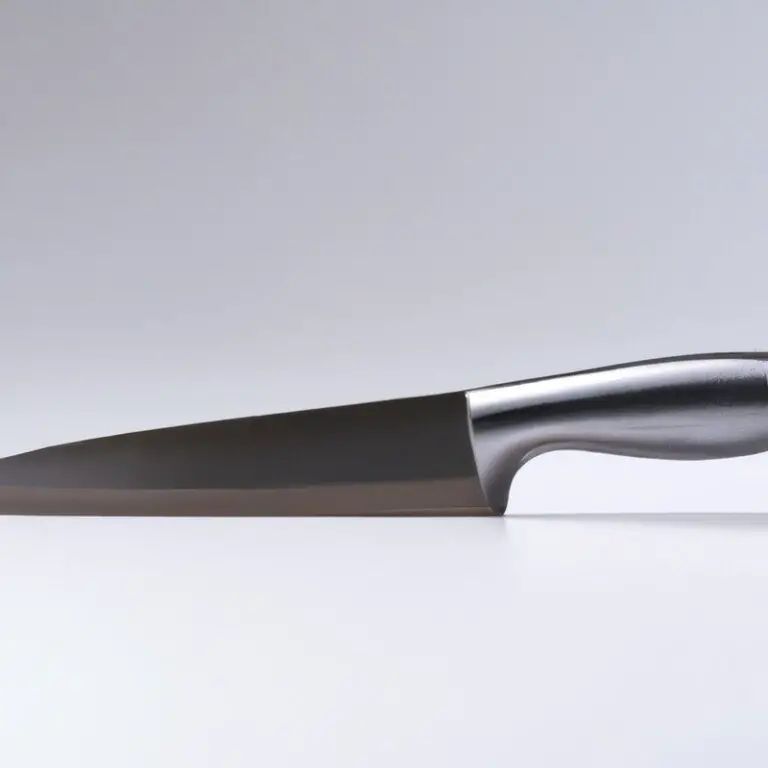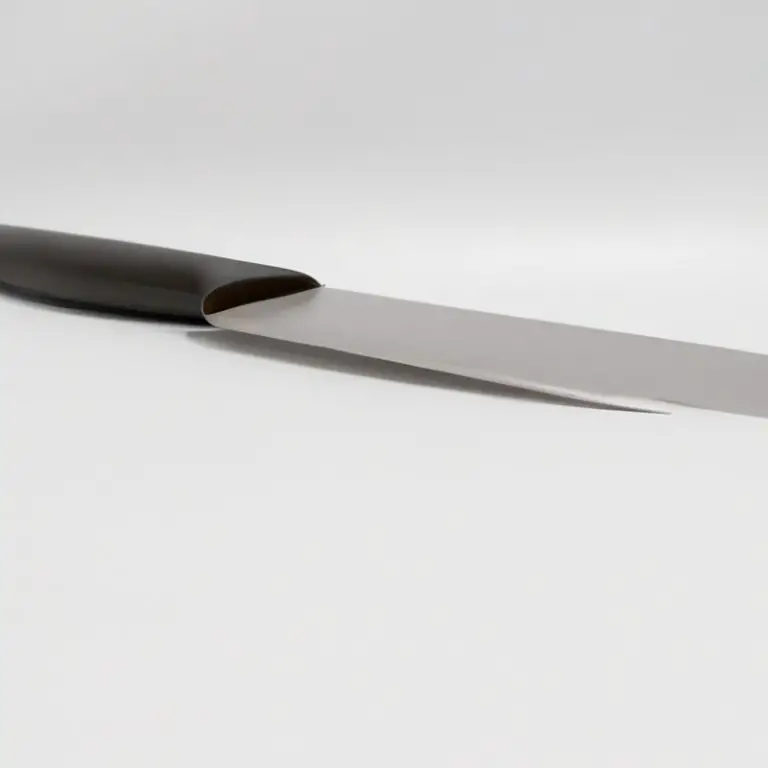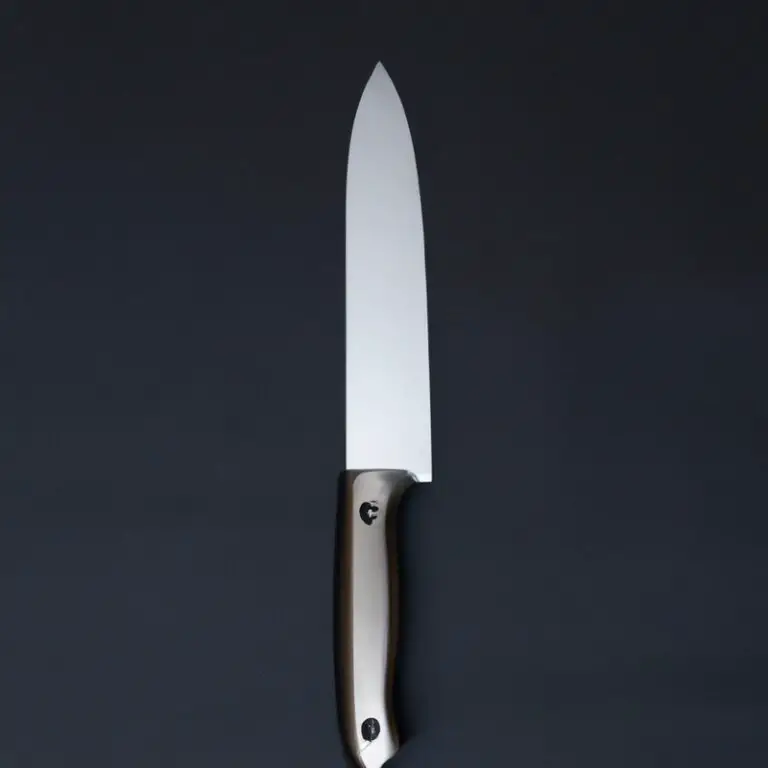How To Properly Use a Serrated Utility Knife?
Key Takeaways:
- A serrated utility knife is excellent for slicing soft foods, such as breads and tomatoes, with precision and ease.
- To properly use a serrated utility knife, start by holding the handle firmly and allowing the serrated edge to do the cutting with a sawing motion.
- For best results, maintain a steady grip, avoid excessive pressure, and keep the blade sharp and clean.
- With practice and patience, you can master the use of a serrated utility knife and enhance your kitchen skills.
A serrated utility knife is a versatile tool in the kitchen, with its ability to cut through tough skins and crusts with ease. However, improper usage can lead to accidents and damage to the blade.
Whether you’re a home cook or a professional chef, learning how to properly use a serrated utility knife is crucial.
In this article, we’ll walk you through the benefits, usage guide, safety tips, maintenance, and cutting techniques to maximize the potential of this handy kitchen tool. Get ready to slice like a pro with your serrated utility knife!
| Step | Description |
|---|---|
| Bread | Cut the crusty bread into thin slices while applying pressure to avoid tearing, place the knife at the outer edge, and saw back and forth. |
| Cakes | Slice soft cakes like layered cake while pressing the knife down using sawing motion to avoid crushing, and avoid using a back and forth motion. |
| Citrus | Cut lemons or limes by placing the serrated part against the fruit, applying slight pressure while sawing back and forth to remove the peel in a spiral motion. |
| Meat | Cut meat against the grain with slow, deliberate strokes, apply pressure to the knife while sawing back and forth in a slight sawing motion. |
Understanding the Serrated Utility Knife: Benefits and Usage Guide.
Understanding the Serrated Utility Knife: Benefits and Usage Guide A serrated utility knife is a versatile tool in the kitchen that can handle a variety of tasks with ease. Its serrated blade can cut through bread, fruits, vegetables, and even meat.
In addition, it is also an ideal knife for outdoor activities such as camping and hiking.
The benefits of using a serrated utility knife are numerous. Apart from being able to handle different food types, it can also perform precision cuts and can cut through tough skins, rinds, and crusts without squishing or tearing the food.
Using a serrated utility knife requires a different technique than a straight blade knife.
It is important to use a sawing motion when cutting to achieve the right texture and to avoid damaging the edge of the blade. The blade should also be kept sharp to ensure clean cuts and easy slicing.
In summary, understanding the benefits and usage of a serrated utility knife is essential for anyone who wants to improve their kitchen skills.
With its versatility, precision, and ease of use, it is a must-have tool for any home chef.
Analyzing the Different Types of Serrated Utility Knives: Which One is Right for You?
There are different types of serrated utility knives in the market, each designed to suit specific needs. It is crucial to choose the right type of serrated knife that fits your intended use.
Here are the most common types of serrated utility knives:
- Pointed-tip Serrated Utility Knife: This type of knife is perfect for precision and delicate cutting tasks, such as slicing through fruits, vegetables, and meat.
- Rounded-tip Serrated Utility Knife: Ideal for cutting bread and cakes. It ensures that the cutting edge does not damage the surface underneath.
- Multi-purpose Serrated Utility Knife: As the name suggests, this knife can handle multiple tasks, from cutting meat, bread, vegetables, to peeling and slicing fruits.
Consider the specific tasks you intend to carry out before purchasing a serrated utility knife. A suitable knife will not only make your tasks easier but also enhance your overall cutting experience.
Step-by-Step Guide to Safely Operating A Serrated Utility Knife.
Here’s a step-by-step guide to safely operating a serrated utility knife:
- Choose the right knife for the task at hand. Serrated utility knives come in different sizes, so use the appropriate size for what you are cutting.
- Hold the knife properly. Place your index and middle fingers on the handle, with your thumb on the side of the blade opposite the teeth.
- Start cutting by applying gentle and consistent pressure on the blade. Be sure to use a sawing motion instead of a chopping motion.
- Avoid using too much force. Serrated knives are designed to make cutting smoother, so let the knife do the work.
- Keep your free hand away from the blade as you cut. Use a cutting board to steady the item you are cutting, and keep your fingers curled away from the blade.
- Clean the blade with a damp cloth after use, and store it in a knife block or sheath to avoid accidental cuts.
By following these steps, you can safely and efficiently use a serrated utility knife in your kitchen.
Learn the Proper Technique for Chopping with A Serrated Utility Knife.
To properly chop with a serrated utility knife, start by holding the knife firmly with your dominant hand. Place your other hand on top of the food to be chopped, with your fingertips curled under for safety.
Use a sawing motion to cut through the food, pressing down gently as needed.
When chopping, it’s important to keep the blade close to the cutting board, using a back-and-forth motion to saw through the food. Avoid using a chopping motion like you would with a straight-edged knife, as this can damage the serrated edges.
It’s also worth noting that serrated knives are particularly useful for slicing bread and other soft foods, as well as foods with tough exteriors like tomatoes and citrus fruits.
However, they may not be the most effective choice for chopping tougher vegetables like carrots or chopping through bones. Overall, mastering the proper technique for chopping with a serrated utility knife can make a big difference in the efficiency and precision of your food preparation.
With a bit of practice, you’ll be able to chop like a pro and take full advantage of the unique capabilities of your serrated utility knife.
Slicing Like a Pro with A Serrated Utility Knife: Tips and Tricks.
Serrated utility knives are excellent for slicing through tough-skinned fruits and vegetables, crusty bread, and delicate cakes. Here are a few tips to help you slice like a pro with a serrated utility knife:
- Choose the right size knife: Use a smaller serrated knife for smaller items like tomatoes or for intricate carving work. Use a longer blade for larger items like loaves of bread or larger cuts of meat.
- Use a sawing motion: Instead of using a simple slicing motion, use a sawing motion to cut through tougher items like crusty bread or pineapple.
- Take your time: Serrated knives work best with a slow and steady sawing motion. Rushing through your cuts can lead to uneven slices.
- Don’t apply too much pressure: A serrated blade is designed to do most of the work for you. Applying too much pressure will only squish and deform your food.
By following these tips and tricks, you’ll be slicing through even the toughest items like a pro in no time!
Bread Cutting Techniques with A Serrated Utility Knife: A Comprehensive Guide.
When it comes to cutting bread, a serrated utility knife is the ideal tool to use. It features a saw-like blade that allows you to cut through crusty bread without squishing the soft interior.
Here are some tips for using a serrated utility knife to cut bread:
- Choose the right knife: Select a serrated utility knife with a long and narrow blade, and a comfortable handle for better grip.
- Position the bread: Place the bread on a cutting board, and hold it steady with one hand.
- Start cutting: Hold the knife at a slight angle, and start sawing back and forth in a gentle motion. Continue sawing until the bread is fully cut, but be careful not to apply too much pressure to avoid squishing the bread.
- Repeat the process: Repeat the process with each slice of bread, remembering to reposition the loaf as needed.
By using these tips, you can cut bread like a pro with a serrated utility knife. Just remember to use caution when handling your knife and always cut away from your body to avoid injuring yourself.
How to Accurately Sharpen A Serrated Utility Knife: Tips and Tricks.
Sharpening a serrated utility knife can seem challenging, but with the right tools and techniques, it can be done accurately. Here are some tips and tricks to help you sharpen your serrated utility knife effectively:
- Use a sharpening rod: A sharpening rod is a long, narrow, and cylindrical-shaped tool that is commonly used to sharpen serrated knives. It has a rough surface that grinds and reshapes the blades of the knife. Place the sharpening rod in the serration and follow the contour of the blade while pushing gently.
- Use a honing guide: A honing guide will keep your sharpening angle consistent. Set the serrated knife on a flat surface with the honing guide mounted.
- Use a ceramic rod: Another tool that can be used to sharpen serrated knives is a ceramic rod. A ceramic rod has a fine grit that is perfect for honing. Place the ceramic rod in the serration and then push it back and forth while applying light pressure.
- Sharpen regularly: It’s important to sharpen serrated utility knives regularly to keep them in excellent condition. Sharpening every six months can extend the life of your serrated knife.
- Use a professional sharpener: If you are not sure about sharpening your serrated utility knife or you don’t have the right tools, take it to a professional sharpener. A professional can sharpen your serrated knife with precision and skill.
By following these simple tips and tricks, you can ensure that your serrated utility knife remains sharp and accurate for all of your cutting needs.
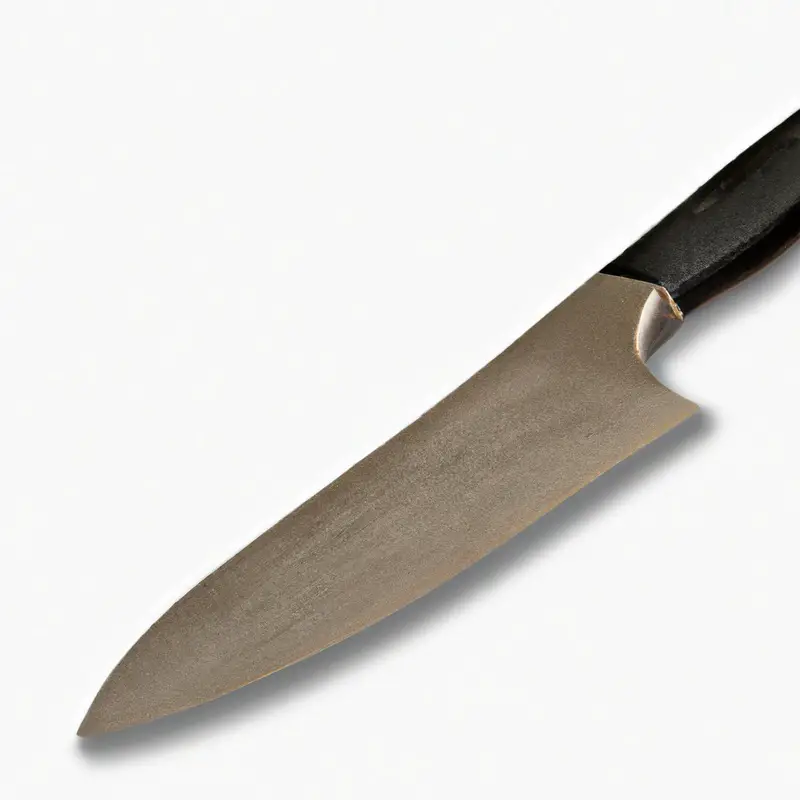
Is A Serrated Utility Knife Sharpenable or Replaceable?
Serrated utility knives cannot be sharpened using traditional sharpening methods, such as a honing steel or sharpening stone, due to their unique blade design. Instead, they should be professionally sharpened by a specialist with specific tools designed for serrated knives.
However, it’s important to note that serrated knives eventually do wear out and lose their sharpness over time.
In this case, it’s recommended to replace the knife rather than attempting to sharpen it. With proper care and maintenance, a serrated utility knife can last for many years, making it a worthwhile investment for any kitchen.
Proper Cleaning and Maintenance of A Serrated Utility Knife.
To ensure your serrated utility knife is always in top condition, it is essential to properly clean and maintain it. Here are some tips to keep your knife in optimal condition:
- Hand wash your knife with warm soapy water and dry it thoroughly with a soft cloth.
- Avoid putting your knife in the dishwasher as the heat and detergent can damage the blade.
- Sharpen your knife regularly, but only use a sharpening tool specifically designed for serrated knives.
- Avoid using harsh abrasives or metal utensils on the blade as it can cause damage to the serrations.
- Store your knife in a safe location, such as a protective sheath or in a knife block.
By following these simple steps, your serrated utility knife can remain sharp and functional for a long time. Regular maintenance can also help extend the knife’s lifespan and prevent accidents in the kitchen.
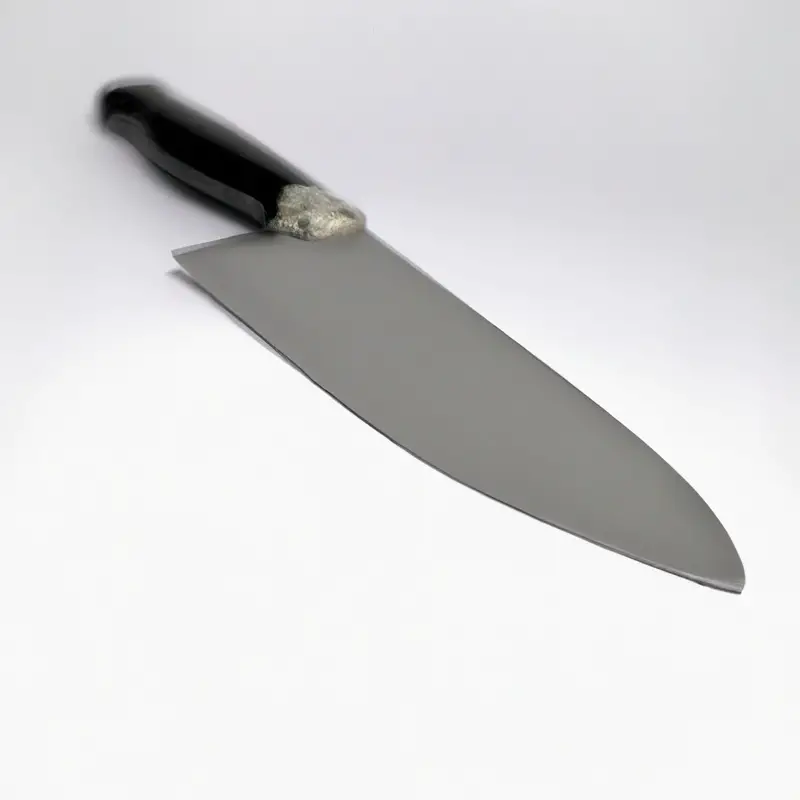
Finding the Right Cutting Board: Which is Safe for Your Serrated Utility Knife?
Choosing the right cutting board is essential to maintain the quality and safety of your serrated utility knife. The ideal cutting board should be gentle on the knife’s serrations, reducing the chances of dulling or damaging them.
The recommended cutting boards for serrated utility knives are made of wood, plastic, or bamboo.
Wooden cutting boards are a popular choice because they have more give and are gentle on the blade’s edge. However, they require more maintenance than plastic or bamboo cutting boards.
On the other hand, plastic and bamboo cutting boards are also a great choice because they are easy to maintain and do not require regular oiling.
They are also affordable and readily available in the market. However, they are denser than wooden cutting boards and may dull your serrated utility knife’s blade more quickly.
It is essential to avoid glass or ceramic cutting boards as they are extremely hard and can dull your serrated utility knife’s blade very quickly.
In summary, choose wooden, plastic, or bamboo cutting boards for your serrated utility knife. Wooden cutting boards require more maintenance but are gentle on the blade, while plastic and bamboo cutting boards are less maintenance-intensive but denser and less gentle on the blade.
Serrated Utility Knife vs. Regular Utility Knife: Which One Do You Need in Your Kitchen?
When it comes to choosing between a serrated utility knife and a regular utility knife, it ultimately depends on your personal preference and what tasks you’ll be performing in the kitchen. Serrated knives are great for cutting through tough, crusty bread, delicate cakes, and soft fruits like tomatoes.
The saw-like edges grip the food, allowing for a cleaner and smoother cut.
Regular utility knives are versatile and can handle a variety of tasks such as slicing cheese, dicing vegetables, and trimming meat. If you regularly work with bread and delicate desserts, a serrated utility knife would be a great addition to your kitchen.
However, if you primarily cook meat and vegetables, a regular utility knife should suffice.
It’s important to invest in a high-quality knife that feels comfortable in your hand and has a sharp blade. Additionally, proper maintenance and sharpening of your knives will ensure they last for years to come.
Serrated Utility Knives: A Versatile Tool in the Kitchen.
Serrated utility knives are a versatile tool in the kitchen that can make cutting through bread, meats and vegetables easy. These knives differ from regular utility knives as they have teeth along the blade that allows them to grip and penetrate harder surfaces.
The serrated edge also makes it easier to slice through food without crushing or tearing it.
Serrated utility knives are not only useful in the kitchen, but also for outdoor activities such as camping trips. It is a necessity for every kitchen as it offers versatility and reliability for any cutting task.
With proper use and maintenance, a serrated utility knife can be a long-lasting investment in your kitchen.
How to Use A Serrated Utility Knife for Meat Cutting.
To use a serrated utility knife for meat cutting, follow these steps:
- Choose the right knife: Look for a serrated utility knife with a sharp blade, comfortable handle, and the right length for the size of the meat you’re cutting.
- Prepare the meat: Ensure that the meat is fresh, clean and dry.
- Hold the knife: Grip the handle of the serrated utility knife firmly and position your fingers away from the blade.
- Cut the meat: Place the tip of the knife on the meat and use a sawing motion to make cuts, keeping the blade parallel to the cutting board.
- Repeat the process: Continue to cut the meat using a back-and-forth sawing motion until you have sliced through the entire piece.
- Be safe: Always be careful when handling knives in the kitchen. Keep the blade away from your body, use a cutting board and avoid cutting through bone, which can damage the blade.
With these simple tips, you can confidently use a serrated utility knife to cut meat and achieve the desired results.
The Pros and Cons of Using A Serrated Utility Knife for Vegetable Cutting.
Pros:
- A serrated utility knife can easily handle tough-skinned vegetables like tomatoes and peppers without squishing them.
- The serrations on the blade allow for a clean and precise cut through fibrous vegetables like celery and asparagus.
- The saw-like edge can quickly and easily slice through soft fruits like peaches and plums.
Cons:
- Serrated knives aren’t as versatile as straight-edged knives, making them less useful for tasks like dicing or mincing vegetables.
- The jagged edges of the blade can make it difficult to achieve perfectly even slices, which may not be ideal when presenting dishes.
- Serrated knives require more upkeep than straight-edge knives as they need to be sharpened more frequently, otherwise they may become dull and less effective.
The decision of whether to use a serrated utility knife for vegetable cutting ultimately comes down to personal preference and the specific task at hand. It’s important to weigh the pros and cons before making a decision on which type of knife to use for each situation.
Serrated Knife Safety: Tips to Avoid Accidents in the Kitchen.
Serrated knives are amazing tools in the kitchen, but they can also be dangerous if not used with care. Here are some practical tips to help you avoid accidents when using a serrated knife:
- Use the right serrated knife for the job.
- Always hold the knife with a firm grip and hold the food to be cut with your other hand.
- Cut downwards, and never towards your body.
- Always keep the knife sharp. Dull blades tend to slip and cause accidents.
- Use a proper cutting board that is stable and won’t move around.
- Store the knife in a designated place when not in use.
- Lastly, keep the knife away from children and ensure they are aware of the hazards of using knives in the kitchen.
By following these tips, you can safely use your serrated knife and enjoy your time in the kitchen.
Comparing Serrated Utility Knives for Outdoor Activities: Which One is Best for Your Camping Trip?
When it comes to camping trips, having a reliable serrated utility knife is essential. Here are some factors to consider when comparing different serrated utility knives for outdoor activities:
- Blade Length: Choose a knife with a blade length that suits your needs. A longer blade is better for cutting larger food items, while a shorter blade is more maneuverable for precision cutting.
- Blade Type: There are two main types of serrated blades: fully serrated and partially serrated. Partially serrated blades are better for general-purpose use, while fully serrated blades are ideal for cutting through tougher materials like rope and branches.
- Handle Material: Look for a handle that is comfortable to grip and provides a good grip, even in wet conditions. Materials such as rubber and textured synthetic materials are ideal for outdoor activities.
- Blade Material: The most common blade materials for serrated utility knives are stainless steel and high carbon steel. Stainless steel is corrosion-resistant and easy to maintain, while high carbon steel is stronger and holds a sharper edge for longer.
- Overall Durability: Look for a knife that is durable and can withstand the elements. Rust-resistant materials and a quality locking mechanism are important features to consider.
By considering these factors, you can choose a serrated utility knife that is best suited for your needs and will be a valuable tool for your next camping trip.
Serrated Knives in Professional Kitchens: Expert Insights and Tips.
Serrated knives are an essential tool in professional kitchens. They are specifically designed to cut through foods with tough exteriors and soft interiors, such as bread, tomatoes, and citrus fruits.
Experts recommend using serrated knives for these types of foods because they produce cleaner cuts and prevent crushing or tearing.
To ensure your serrated knife is performing at its best, it is recommended to regularly sharpen and maintain its edge. Additionally, it’s crucial to store the knife properly when not in use to prevent damage and maintain its longevity.
It is also important to practice proper safety when using a serrated knife in the kitchen.
Always hold the knife with a firm grip and avoid using excessive force when cutting. It’s also crucial to ensure your cutting board is stable and non-slip to prevent any accidental injuries.
Lastly, when selecting a serrated knife for your kitchen, it’s essential to consider the blade length, handle grip, and overall weight to ensure it fits comfortably in your hand and is easy to maneuver.
By following these expert insights and tips, you’ll be able to properly use a serrated knife in your professional kitchen and achieve desirable results in your food preparation.
How to Store Serrated Utility Knives Properly.
Proper storage is crucial to maintain the sharpness and longevity of your serrated utility knife. Here are some tips for storing your knife properly:
- Store in a knife block or sheath: A knife block or sheath can protect the blade from getting damaged or dull. It is also a safe way to store your knife when not in use.
- Keep it dry: Before storing your knife, make sure it is completely dry to prevent rust and corrosion.
- Avoid storing in a drawer: Storing your knife in a drawer can cause damage to both the knife and other items in the drawer. If you must store it in a drawer, use a sheath or blade guard.
- Separate from other utensils: Avoid storing your serrated utility knife with other utensils, as it can also cause damage to the blade. Instead, keep it in its own designated spot.
By following these simple storage tips, you can extend the lifespan of your serrated utility knife and ensure it remains in optimal condition for future use.
The Benefits of Using A Serrated Utility Knife for Pastry and Dessert Making.
A serrated utility knife is an indispensable tool in pastry and dessert making. Unlike a regular chef’s knife, a serrated blade gently saws through delicate layers of cake, crusts, and bread without crushing them.
This is particularly useful when making precise cuts of cakes and pastries.
The teeth of a serrated blade have a “bite” that makes it easier to cut through crisp or flaky textures. The knife’s sharp serrations also ensure that the crusts of bread or pie remain intact by cutting without too much pressure.
Serrated utility knives are also versatile in their use.
They provide the perfect cut for fruit and soft vegetables like tomatoes. The serrated blade can easily slice through the tough skin of pineapples and melons, making them perfect for fruit platters and cocktail garnishes.
In summary, the benefits of using a serrated utility knife for pastry and dessert making are:
- Ability to make precise cuts without crushing delicate layers
- Gentle sawing motion that ensures crusts remain intact
- Versatility in cutting soft fruits and vegetables
- Perfect for cutting through crisp or flaky textures, such as croissants or puff pastry.
Serrated Utility Knives: A Necessity for Every Kitchen
Serrated utility knives are a must-have in every kitchen. They are versatile, reliable, and can be used for a wide range of tasks, from slicing through soft bread to cutting through tougher meats and vegetables.
The serrations on the knife’s edge make it easy to cut without applying too much pressure, reducing the risk of losing your grip and injuring yourself.
Plus, the serrated blade stays sharp for longer than traditional straight blades, meaning you won’t need to sharpen it as often. Whether you’re a professional chef or a home cook, investing in a high-quality serrated utility knife will make your time in the kitchen more efficient, safer, and more enjoyable.
Final Verdict
A serrated utility knife is an essential tool that can make all the difference in your everyday kitchen tasks. From slicing through bread to chopping vegetables with ease, this versatile knife is a must-have in any kitchen.
By following the steps outlined in this guide, you can safely and efficiently use your serrated utility knife for any cutting task.
Remember to practice caution and proper technique to avoid accidents and prolong the lifespan of your knife. With the valuable insights and tips shared in this article, you can become an expert in using and maintaining your serrated utility knife.
Trust the accuracy and reliability of the information provided to take your kitchen skills to the next level.
Invest in a high-quality serrated utility knife today, and unleash your culinary potential.

